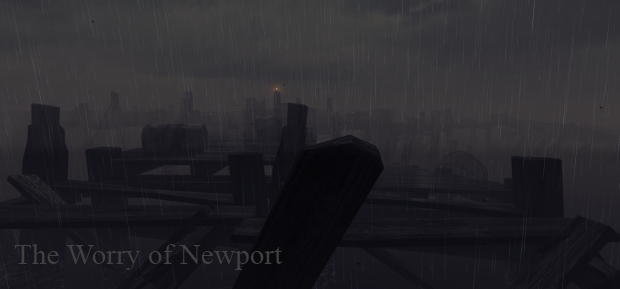The purpose of this feature article is to enlighten all interested parties in how much more streamlined and polished Part 2 will be compared to Part 1, focusing in on the brand new design strategy and development goals--in short, treating Part 2 like a movie.
Quick Overview
Part 1 was quite a difficult mod to create due to the fact it had four incarnations before being finalized in the state it's at now. Most of this was due to delays and rebirths because I had to learn something, or had learned something, respectively, in sandbox 2. More details on this particular paragraph can be found in the summary page, through the blogspot link.
The interesting news is that Part 2 is being developed like a true game/movie. I have written and am finalizing a full blown screenplay and script and, as far as designing is concerned, I am creating it one scene at a time. Each scene will have a start and end, with independent flowgraphs, area boxes, triggers, and so forth, keeping every single scene separate from each other. This allows me:
- Freedom. I can make a full scene, as small or as big as I need, and then end it on a note that brings the player into the next segment seamlessly.
- Optimize. I can use flowgraphs at the end of every area to delete everything the player just passed, only saving brushes and vegetation behind.
- Legroom. I have better control when the game is scene by scene, instead of open ended and branching like Part 1 was.
Now this might be a strange way to think of designing a mod but I've ironed out the process well enough at the end of the last part to know how to use it!
To explain a little context is required. For part 1 I designed one area at a time, and there were three areas in the game. The Port (the port area all the way up to the cliff), The Shrines (the shrine all the way up to the garage sequence) and lastly, The Forest, which encompassed a gigantic scenic area with very few gameplay areas.
This development idea was terrible. Handling an entire chapter at once and putting all the pieces together like a lego building in the end is what stressed me out completely. I had to have spinoff branching areas, books lying every which way with no relevant order, and overall made it hard for playtesters to focus and for players to fully appreciate the story.
When developing a project an essential aspect to keep in mind is to always orientate yourself to the proper task at hand instead of orbiting dozens of ideas and implementations. Keep it simple, keep it linear, and the project's quality will reflect the chaos of the development cycle
Part 2
So with Part 2, I can create one scene at a time. For a direct example the first scene in the game has a player locked in a house during a fierce storm as a narrative plays, introducing the player back into the world of Newport. Once the door is blown open the player is guided through visuals to the end of the "Scene", which when reached, fades out. An intermission plays, and then Scene 2 will be loaded, in this case, a winter flashback, tied directly into the game through a narrative.
I can fully write it and flesh it out in the screenplay, design it in game, add a start and end to it, and then move on to the next scene which will give the illusion of seamless immersion. The player in most cases will have no idea the game just teleported the player, with the area around and above them being an illusion to look like the last area they were in. This allows me independence, full optimization control, and also simply being able to focus as I am a sole modder.
Furthermore, you might be wondering how I can present the illusion that the player is seamlessly moving forward. For starters, I have a concept artist working with me to create relevant artistic screenshots, portraits, and so forth, which will act as banners or observations the player recalls. Those might show during gameplay (picking up a picture or book) or like the black screen narratives of the first game.
There's also the fact that cutscenes, through trackview, will be integrated into this, acting as intermissions. Once these start up the previous area is deconstructed through flowgraph, and the succeeding area is loaded or at least prepared. While these cutscenes play out they will act as atmospheric filler while the story plays out, ensuring the player does not miss a thing with the story unlike last time.
Part 2 compared to Part 1
Part 1 was designed with a goal of telling a very sad, brief, almost poetic story. I wanted to show people my brand of horror, my writing, and immersive them in a world they ultimately know very little about. Part 1 started and ended on an illusive note, and I can say this now: it was merely the prologue to something great.
Part 2 is going to be an absolute horror game, showing how I want to disturb or scare the player. The evils of Gray, the destruction of Newport, the crumbling sanity of the protagonist, the actual Worry of Newport--it will all be shown. The story will kick into gear, and with this new development strategy, I can fully implement as extensive of a narrative as I need to. More on how Part 1 and 2 compare will be shown in a later news post, but I can promise you that it will be a more polished, well designed, fully featured experience.





